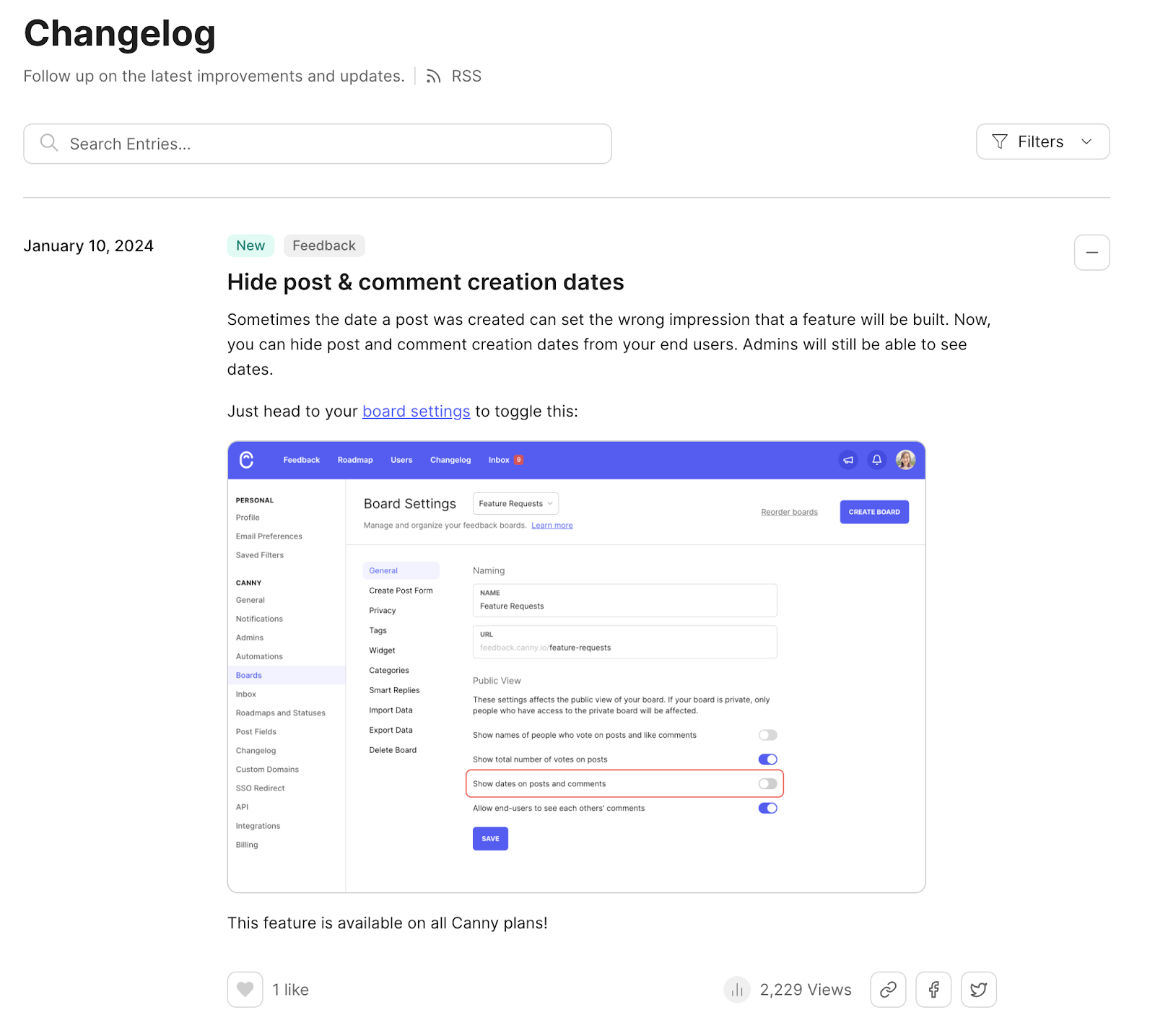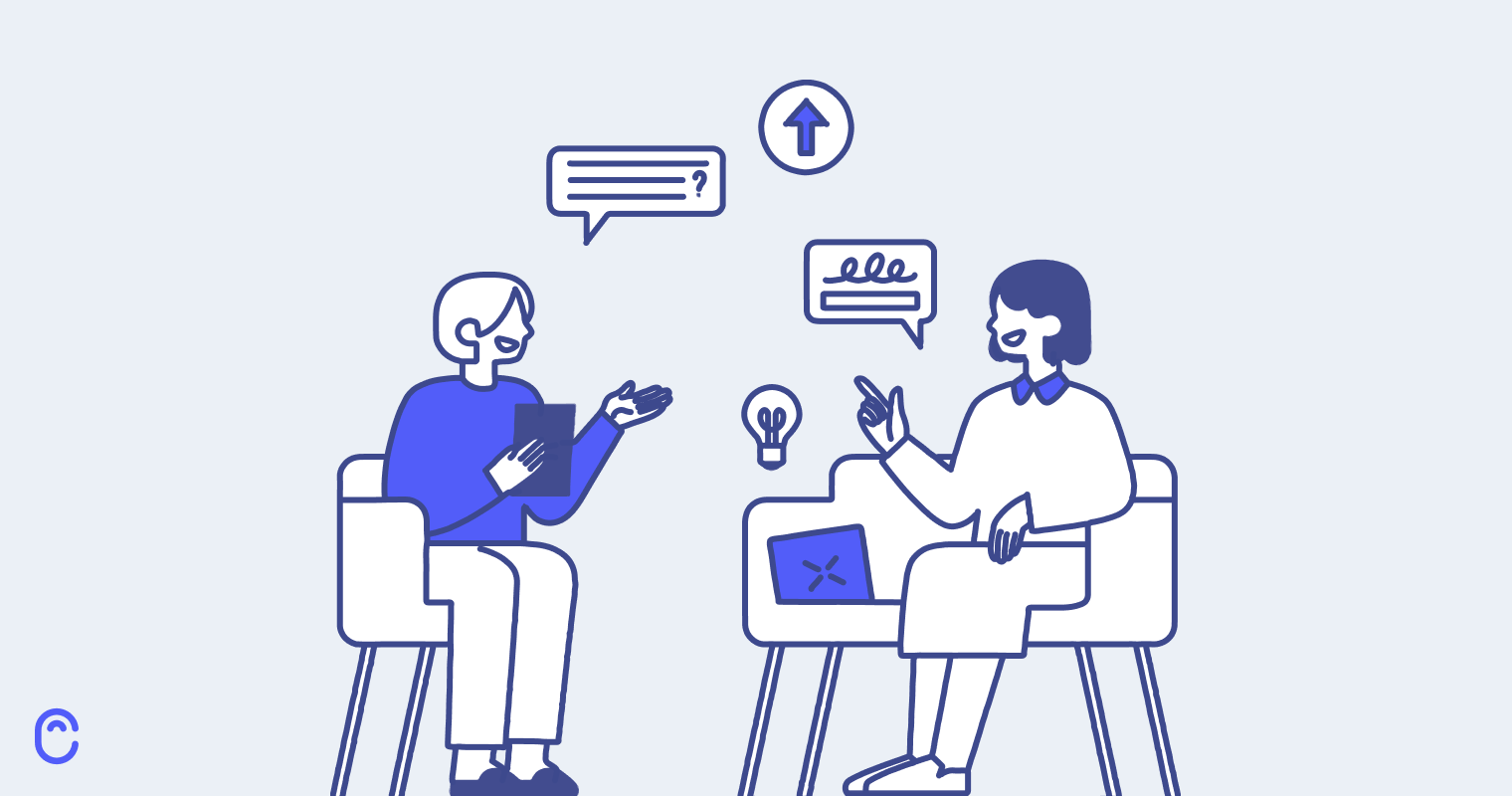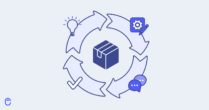User interviews are one of the best ways to understand your customers. Why? You get to hear straight from them. You can learn what they like, need, and want from your product.
Imagine you’re a detective whose case is to make your product awesome. User interviews are your clues. They show you what to do next.
Also, when you talk to your customers, they feel special. This makes them like your product even more.
In this post, we’ll show you how to do these interviews well. We’ll talk about picking the right people, asking great questions, and what to do with what you learn. Ready to be a user interview detective? Let’s crack open our case!
Who should interview users?
You need to be careful when deciding who talks to customers. Here are some ideas.
Product team
A product manager is often the best choice. Why? They know the product inside out. They understand what they need to learn from users to improve the product. Plus, they can ask more detailed questions since they know exactly what info they need.
They’ll action the feedback they get faster. No broken telephone or misinterpreted messages.
Growth team
Members of the growth team can uncover insights directly linked to user acquisition and retention. They’re typically focused on metrics and growth strategies. This allows them to ask how features or changes might attract or retain users.
Customer success
This team can use interviews to understand customer challenges and successes. This will help them craft strategies to improve the user experience. They’re already used to talking to customers, so they’re a great choice.
Customer support
These folks talk to your customers daily. They know the common issues and questions your customers have. They can delve deeper into these issues and then provide critical feedback to the product team for improvements.
Design team
If your team has a UX researcher, they can be a great pick. They’re trained to understand user behavior and needs. These skills can be very useful for user interviews. Like product managers, they are very close to the product, so they’ll know what to ask and how to act on that feedback.
Your design team can explore how your product makes the users feel. Is it intuitive enough? Does the design make sense? Does it enable them to get things done?
Founders
Founders bring their big vision to the table. When they talk to customers, it shows how much the company cares about user feedback. Founders can ask:
“Does our product match the big dream we’re telling the world?”
This helps keep the product true to the vision they started with.
Neutral team
Sometimes, having someone not directly involved with the product is good. This can be someone else from your team or even an outside consultant. Why? They can be more objective and might not influence answers based on their own biases about the product.
When should you conduct user interviews?
Knowing when to chat with your users is as important as knowing how.
“When a product team develops a weekly habit of customer interviews, they don’t just get the benefit of interviewing more often, they also start rapid prototyping and experimenting more often. They do a better job of connecting what they are learning from their research activities with the product decisions they are making. I believe continuous interviewing is a keystone habit for continuous discovery.”
Teresa Torres, product discovery coach at Product Talk
Keep in mind: sometimes you can’t really choose when to talk to your customers.
If you can choose the time, here are some key times to consider.
When planning your roadmap
Before deciding your product’s future, ask your users for their input. Questions like: “What should we do next?” can be super helpful.
Need help with your roadmap? We’ve got free templates right here!
“Injecting the actual customer who uses the software into the development process is key to creating value.”
Zarar Siddiqi, co-founder, Raptors Republic
Talk to users before you even start building. Ask:
“What do you need most?”
This can guide you to build features that users really want.
After launching a new feature
Once you launch something new, check in with your users. Ask:
“Is this what you expected?”
Their answers can help you tweak and improve.
Our customer success team has regular checkins with our customers. They set goals, assess metrics, and build a plan for success.
Lots of feedback comes up during those meetings, so we always know what’s top of mind for our users.
When you notice changes in usage patterns
If you see users behaving differently with your product, it’s time to ask why. A simple: “What’s changed for you?” can uncover a lot.
“I track our customers’ usage. If I see that someone doesn’t use Canny to its full potential, or if someone’s doing a really great job using the platform, I reach out. I want to see their workflow and help them utilize the platform even more. The aim is to collect feedback, help customers become more efficient, and learn from their experiences.”
Julia Valade, customer success at Canny
Regular check-ins
Don’t only talk to users when there’s a significant change. Continuous interviews, like once every quarter, can give you ongoing insights. You can ask:
“What’s working well for you?”
Remember – timing is everything. Chatting at the right moments can give you the best insights to make your product excellent.
When customers churn
This is the most difficult customer interview to get. When a user decides to not use your product anymore, they’re usually not interested in giving you feedback. This is normal – if you decided to cancel your subscription, you wouldn’t spend too much time explaining why, right?
There are some exceptions. Sometimes, customers churn not because they’re unhappy. Here are a few examples:
- This department is experiencing a budget cut and can no longer afford your product
- There’s an objectively better tool that does more than yours
- This team’s strategy changed and they’re no longer focused on the problem your tool solves
If you’re lucky enough to get churning clients like this, use this opportunity. In these cases, it’s best to have the founders reach out. Churning clients will feel valued even though they’re leaving. Founders can have an honest conversation and get extremely valuable feedback.
“Even when I’m really busy, I make time to talk to customers when it comes to product gaps. Especially when they are an important customer and/or are churning. I get so much value from a 20-minute call.
During the chat, I make sure to let them do most of the talking. If they’re churning, I’ll also mention what we have on the roadmap that might solve their problems. Even if we’re parting ways, I want them to know the door is always open.”
Sarah Hum, co-founder at Canny
How to conduct user interviews
Conducting user interviews is like going on a treasure hunt. You need a map and a plan to find the gold – a valuable insight. Here’s how you can set yourself up for success.
Set interview goals
Before you start, know what treasure you’re looking for. Your goals guide the whole chat.
Example: you’re introducing a new feature. Goal – understand what users expect from this new feature.
Define clear objectives for each interview
Break down your big goal into smaller targets. If your goal is about a new feature, the objectives could be:
- Finding out what users like about similar features
- What problems do they face with current options
Clear objectives keep your interview focused and efficient.
Example: you’re noticing your NPS score go down. Interview goal – understand what is driving that score down.
Your customers are doing you a favor by agreeing to an interview. So use their time wisely!
Choose the right customers
You need to pick the right participants for these interviews. But how do you know who’s “right”? Here are a few ways.
Look for a mix of users. You want the super fans, the occasional users, and even the critics. Each type of customer will give you different insights. Only choosing happy customers won’t give you the whole picture. Focusing just on unhappy users won’t do that either. You need a good combo.
“It’s a matter of understanding whose feedback is the most valuable right now. If you’re having issues with retention, it’s best to talk to customers who are slipping away. If onboarding is an issue, talk to customers who just signed up.”
Dan Murray, engineer at Canny
Use CRM data and social media. Your CRM is a treasure trove of info. It can tell you who’s using your product a lot and who’s just started. Social media can show you who’s talking about your product. Both are great tools to find customers who really engage with your product. They likely have something to say.
“You need to design creative metrics to filter out the customers you want to talk to. Ideally, you need customers who are at the intersection of these two things: they’re in the most receptive state to accept the interview, and they are most likely to answer your specific questions.”
Dan Murray
Use screening questions to filter participants. Ask questions to make sure you get the right mix of customers. You might ask how long they’ve used your product or how exactly they use it. This helps you find people who fit your target audience.
When you know what you’re trying to achieve with these interviews, picking a participant will be easier.
“Spend time early on understanding their specific use case. Maybe they’re using the product in an unorthodox way, or they’re not your typical product market fit. Their feedback can still give some good insights and potentially “unlock” more business with similar use cases.”
Jacques Reulet, customer support at Canny
Example: to understand why your NPS score is decreasing, pick customers who gave you lower scores.
Remember – interviews are costly. They take up valuable time from your team and your customers. So be very strategic.
Design effective questions
Crafting the right questions is crucial for an effective user interview. Here’s how to design them effectively.
Focus on open-ended questions for depth
Open-ended questions let users share more than just yes or no. They can provide stories, feelings, and ideas.
Example: don’t ask: “Do you like our new feature?” Ask: “How has the new feature impacted your daily tasks?”
“Feedback is a gift. Not everyone wants to or has time to give you that “gift.” People typically buy your product because they want it to take work off their plate, not add more work.”
Dan Murray
Avoid leading questions to get unbiased insights
A leading question suggests an answer and defeats the purpose of the whole user interview.
Example: don’t ask: “Don’t you think our new feature is helpful?” Ask: “How do you find our new feature in terms of usefulness?”
Prepare more questions than expected
It’s better to have too many questions than too few. This doesn’t mean you have to ask all of them, but it allows you to explore different topics based on the conversation flow.
Include questions that approach issues from different angles
Tackle the same topic in various ways to get a fuller picture. If you’re asking about a feature, also ask how it fits into their workflow. Add a question like:
“How does it compare to similar features you’ve used before?”
Use questions as a guide, not a script
Be flexible. If the conversation takes an interesting turn, follow it. Your interview guide is there to keep you on track, but the real value often comes from unscripted moments.
“Converse, don’t interview. The best [interviewers] converse with their guests instead of interviewing them. They start out with a planned question or two and then let the response dictate the conversation.
“Everybody Writes,” by Ann Handley, Chief Content Officer at MarketingProfs
Example: you’re investigating a decrease in usage. Begin with a neutral question like:
“Can you walk me through how you typically use our product these days?”
This open-ended question doesn’t presume any change in usage and allows the user to describe their experience freely. Based on their response, a good follow-up could be:
“Have you changed the way you use our product?”
“Be prepared, but don’t read off a script. Conversations aren’t scripted, and you want an interview to feel like a conversation.”
Kerry O’Shea Gorgone, Marketing Smarts podcast host
Your questions should encourage users to think and reflect. This will give you in-depth and genuine responses. You never know where you’ll find that critical actionable insight!
Prepare the interview environment
Setting the right environment for your user interviews can make a big difference. Whether it’s in person or online, a comfortable setting helps users open up.
This might seem obvious, but it’s worth reiterating. Here’s how to prepare for your user interview:
Ensure a comfortable setting – physical or virtual
First, prepare your interviewees. Explain how the interview process will unfold. Describe how you will interview participants – what kind of questions will you ask? Mention how long it’ll take and how you’ll use their responses. When people know what to expect, they tend to relax more.
For in-person interviews: choose a quiet, private space. Make sure it’s a neutral setting like a meeting room, free from distractions. Comfortable seating and a pleasant temperature are important too. Offer refreshments and snacks if you can.
For remote interviews: check your tech setup beforehand. Good lighting, clear audio, and a stable internet connection are key. Remind participants to find a quiet space where they won’t be interrupted.
Start with small talk for a relaxed atmosphere
Begin the interview with a light conversation. Ask about their day or comment on something general like the weather. This isn’t just filler – it sets a friendly tone and makes your interviewee more comfortable.
If it’s a virtual interview, you might also spend a minute ensuring they are comfortable with the technology. For instance, ask if they can hear and see you well.
Making the participants feel at ease, respected, and ready to share openly. The right atmosphere can lead to more genuine and insightful conversations.
Execute the interview
Your number one research goal is to run the interview effectively. You must respect your participants’ time and not waste your own. Here’s how to make the most of your conversation.
Listen more, talk less
Your main job is to listen. Let the users do most of the talking. Be patient, even if there are pauses in the conversation. Sometimes, the best insights come after a moment of silence.
“The focus should be on the value for the customer. Think about the reason they took the call. To get some value out of it, right? So you need to answer their questions and address their concerns first. Then, see if you can interweave your questions in the interview. This way, the customers will feel like this conversation was for them.”
Dan Murray
Follow up for clarity, but don’t lead the conversation
If something isn’t clear, ask follow-up questions like:
“Could you tell me more about that?”
Avoid questions that lead them to a specific answer.
“If you’re trying to get specific information out of an interviewee, you’ll want to guide the conversation a bit, of course. Don’t just let it wander off into a tangential rabbit hole.”
“Everybody Writes,” by Ann Handley, Chief Content Officer at MarketingProfs
Use semi structured interviews for natural flow
Start with a clear plan and key questions, but remain open to new directions. If a user shares something intriguing that’s not on your script, dive into it. This unexpected turn could lead to a valuable insight you hadn’t considered before.
“Keep things on track but still free-flowing. Practice what Matthew T. Grant calls “laser listening.” Look for the threads of the response to naturally pick up in a subsequent question. Don’t just jump to the next question on your list just because, well, it’s on the list.”
“Everybody Writes,” by Ann Handley, Chief Content Officer at MarketingProfs
Explore unforeseen topics and elaborate on responses
When users bring up topics or issues you hadn’t planned to discuss, see it as an opportunity. Ask follow-up questions like:
“Can you tell me more about that?”
“How does that affect your experience?”
This shows you’re interested in their perspective and allows you to gather detailed insights.
Avoid judging or educating interviewees
Keep your opinions and knowledge to yourself during the interview. Your goal is to understand their perspective, not to correct or inform them.
Focus on gathering as much information as possible within the limited time.
Process the insights
After the interview, it’s crucial to process what you’ve learned effectively. Here’s how to handle the insights.
Organize and analyze feedback
Start by organizing the feedback. If you have notes or recordings, review them and highlight key points. Look for patterns or recurring themes. For example, if several users mention difficulty finding a feature, that’s a pattern. AI comes in handy here – you can ask ChatGPT to summarize your findings for you.
Use tools like spreadsheets or qualitative data analysis software to categorize and analyze the information. This makes it easier to identify trends and prioritize actions. Check out some great AI tools here!
Use insights for product development
Translate these insights into actionable steps for your product. For instance, if users struggle with a feature, consider redesigning its interface.
“The best way to delight and customer? Fix their problem. Let’s say they named a major blocker during the interview. And that fix will take you half a day to develop. Don’t even think about it. Just ship it and show them how much you value their feedback.”
Dan Murray
Share these insights with your team. It’s important that everyone understands user feedback – from developers to marketers. This way, the whole team can be aligned on what needs to be improved.
Our team adds the notes to Canny, Hubspot, and a corresponding Slack channel. Then, customer success and product meet to discuss action items.
Don’t forget to track changes made based on these insights. Monitor how these changes impact user experience and satisfaction.
Canny is a great tool for tracking feature requests. You can add votes on users’ behalf and quickly see how impactful that feature is. Try it for yourself!
Processing insights helps you convert raw feedback into concrete product improvements. It’s about turning user voices into actions that enhance their experience.
“Getting those pulse checks with customers helps you get a better understanding of your product’s perception externally. You can also make better decisions going forward. If you’re choosing what to develop next, you can rely on that feedback to see which feature is the most pressing. You can even take that data, add it to Canny, and evaluate the feature’s impact further.”
Dan Murray
Foster relationships post-interview
Conducting a user interview is important. However, building ongoing relationships with your interviewees is crucial.
Show appreciation to participants
Right after the interview, thank them for their time and insights. A simple thank you note or email can make a big difference.
Consider sending a small token of appreciation, like a discount code or a gift card. This gesture shows that you value their input and time.
Follow up with participants after the interview process is complete. Let them know how their feedback is being used. For example, if you update a feature based on their input, send them a message about the change.
You can automate this task with Canny. Our changelog automatically notifies everyone who submitted, voted, or commented on a particular feature.

For instance, you could say:
“Thanks to your feedback, we’ve improved our feature. We’d love for you to try it and share your thoughts.”
This follow-up shows that you take their feedback seriously. It also keeps your users engaged with your product’s journey.
Fostering relationships with your interviewees turns them into more than just participants. They become part of your product’s community. This ongoing engagement is key to building a loyal user base that feels heard and valued.
Limitations of user interviews
User interviews are a powerful tool, but they come with limitations. It’s essential to be aware of these and know how to address them.
Social desirability bias occurs when participants give answers they think you want to hear. Instead of sharing their true thoughts, they tell you what they think is “the right answer.”
For instance, they might overstate their satisfaction with your product to avoid being negative.
To combat this, ensure you create an environment where participants feel comfortable being honest. Reassure them that all feedback, positive or negative, is valuable and appreciated.
Want to take this even further? Use interviews in combination with other user research methods.
Example:
- Surveys for quantitative data
- Analytics to understand user behavior
- A/B testing to test specific hypotheses
- Feedback boards for more informal and even anonymous feedback
- Usability testing to see rather than hear about product usage
You can cross-validate findings and gain a richer, more accurate picture of user needs and experiences. This multi-faceted approach will help you make better product decisions.
“Make it a point to observe the customer when they are using your app. I use PostHog’s session replay feature and am amazed watching videos of how customers use the product compared to how I think they use it.”
Zarar Siddiqi, co-founder, Raptors Republic
Conclusion: how to interview customers for best insights
User interviews are more than just conversations. They are a direct line to understanding what your customers think, feel, and need. These interviews can really shape the future of your product.
You need to carefully select who to interview and what to ask to make this worthwhile.
The actual value of user interviews – connecting you with your customers on a deeper level. They are not just about gathering data; they’re about building relationships.
User interviews are powerful, but they should be part of a broader research strategy. Combine them with other methods for the best results.
Listen to your users. You’ll build a great product and create a community around it.
Subscribe to learn more about feedback, product management, and more.








